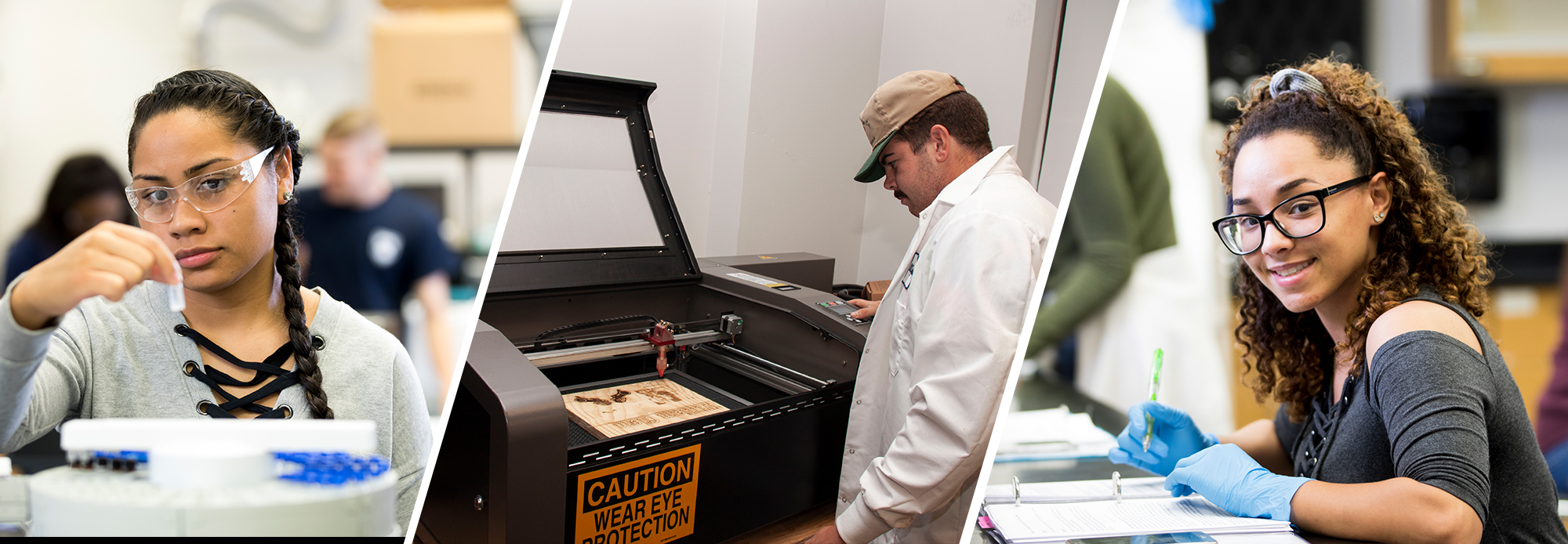Engineering Resources
3D Resin Printer from FormLabs
This 3D Resin Printer, known for being additive manufacturing, creates realistic components from CAD models. It copies the natural configuration, inserting substances such as resin or polymer level by level to generate an actual duplicate. Through 3D printing, you should be able to construct efficient models, entirely while exhausting fewer elements than customary constructing devices.
3D printing is one device that supports students hypothesizing and envisioning their projects as they cultivate their product from the advancement phases of a draft to the ultimate outcome. The students that are striving for an engineering degree would enjoy using our 3D Resin Printer as they advance through the courses using such instruments. This also allows students to explore the instrument by printing forms in various strengths such as if they are hard plastic, flexible materials, or etc.
3D printing lets our professors target valuable education practices for profound abstract concepts that carry knowledge from their lesson plans or past experiences into their students' grasp. Thorough 3D creations come to existence with 3D printers, which should allow to inspire involvement with other teammates, organization, draft, and discerning challenging or compound concepts.
The use of this instrument is first introduced in ENGR1411-Introduction to Engineering and is utilized in subsequent courses.
Filament 3D Printers
These are our Filament 3D Printers. These type of 3D printers are the most common and affordable type of printing — most machines utilize this technology. These 3D printers heats up thermoplastic to near melting point and extrudes it out a nozzle that traces the cross section of a part for each layer. This process repeats for each layer.
 Laser Engraver from Voccell
Laser Engraver from Voccell
Our Laser Engraver is generally one of the easier pieces of equipment students can learn. Designs are produced in a vector drawing package, sent to the machine via a printer driver, and the laser engraver does the rest.
The speed and power of a laser allows for quick production of designs so you can get more students on the machine in a shorter amount of time.
A Laser Engraver is a machine that moves a laser across a material to either cut it or engrave it. Our
Laser Engraver has the capability of making precise cuts and engravings in a timely manner.
Complexity of the shape is inconsequential.
The Laser Engraver prints files from Adobe Illustrator, but an image or a .dxf file can be easily imported
into Adobe Illustrator. In Adobe Illustrator, black lines and images will be engraved and pure red lines
(RGB [255, 0, 0]) will be cut.
The use of this instrument is first introduced in ENGR1411-Introduction to Engineering and is utilized in subsequent courses.
The Reynolds number apparatus is used to study fluids as they flow. The Reynolds number determines whether a fluid flow is laminar or turbulent. Flowing fluids normally follow along streamlines. If a flow is laminar, fluids will move along smooth streamlines.
The Reynolds number, referred to as Re, is used to determine whether the fluid flow is laminar or turbulent. Technically speaking, the Reynolds number is the ratio of the inertial forces to the viscous forces. This ratio helps to categorize laminar flows from the turbulent ones.
This instrument is utilized in ENGR2223- Fluid Mechanics.
 Assortment of Hand Tools
Assortment of Hand Tools
These tools are the basic necessities for the building of projects. These students are to learn how to properly use them in order to complete their project assignments. These tools include screwdrivers, pliers, vice grips, staple gun, levels, and others seen above.
Assortment of Power Tools
These tools are to help improve the quality and the speed of building projects. These students are to learn how to properly handle these tools in order to complete these projects. These tools include table saw, miter saw, drill press, router, drills, etc.
Band Saw (located on the right in the photo above)
A band saw is a saw that makes irregular and curving cuts in wood. This saw can also cut through metal if there is a metal project. These students are to learn how to properly cut a curve piece in their project with precision.
Drill Press (located in the center in the photo above)
A drill press is a device for producing holes in hard substances. The drill is held in a rotating spindle and is fed into the workpiece, which is usually clamped in a vise resting on a table. Students will learn how to properly use this tool when they build on their projects.
Table Saw (located on the right in photo above)
A table saw is a woodworking tool, consisting of a circular saw blade, mounted on a table, that is driven by an electric motor. The blade extends through the top of a table, which provides support for the material, mostly wood, being precisely cut. The students will learn the usage of the table saw and to properly handle the table saw. The students will likely build a semester project using the table saw. They will also learn the descriptions of a rip cut and a crosscut.
Miter Saw by DEWALT Power Tools (located on the left in the photo above)
Power miter saws are designated to make angled cuts for molding, trim work, rafters and other general carpentry applications. The students will also use the miter saw to build their semester projects and to learn how to properly and precisely angle cut for those said projects.

